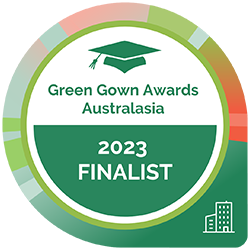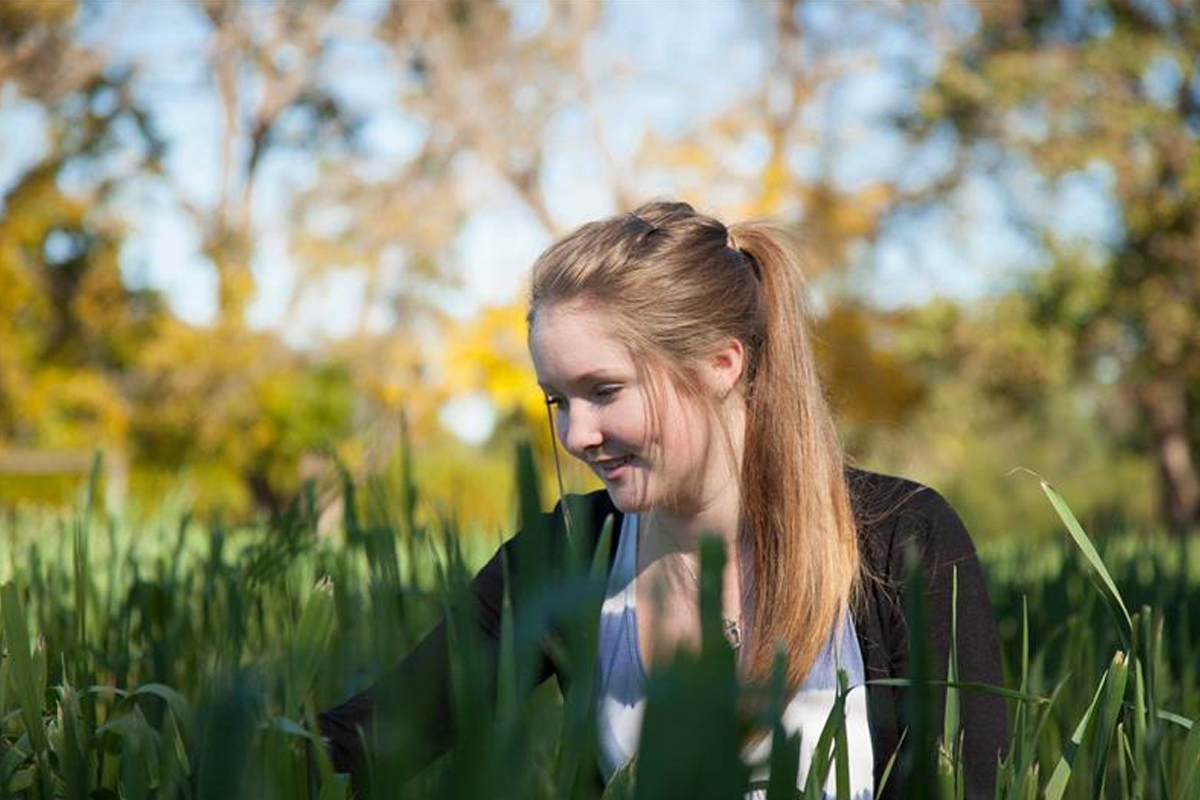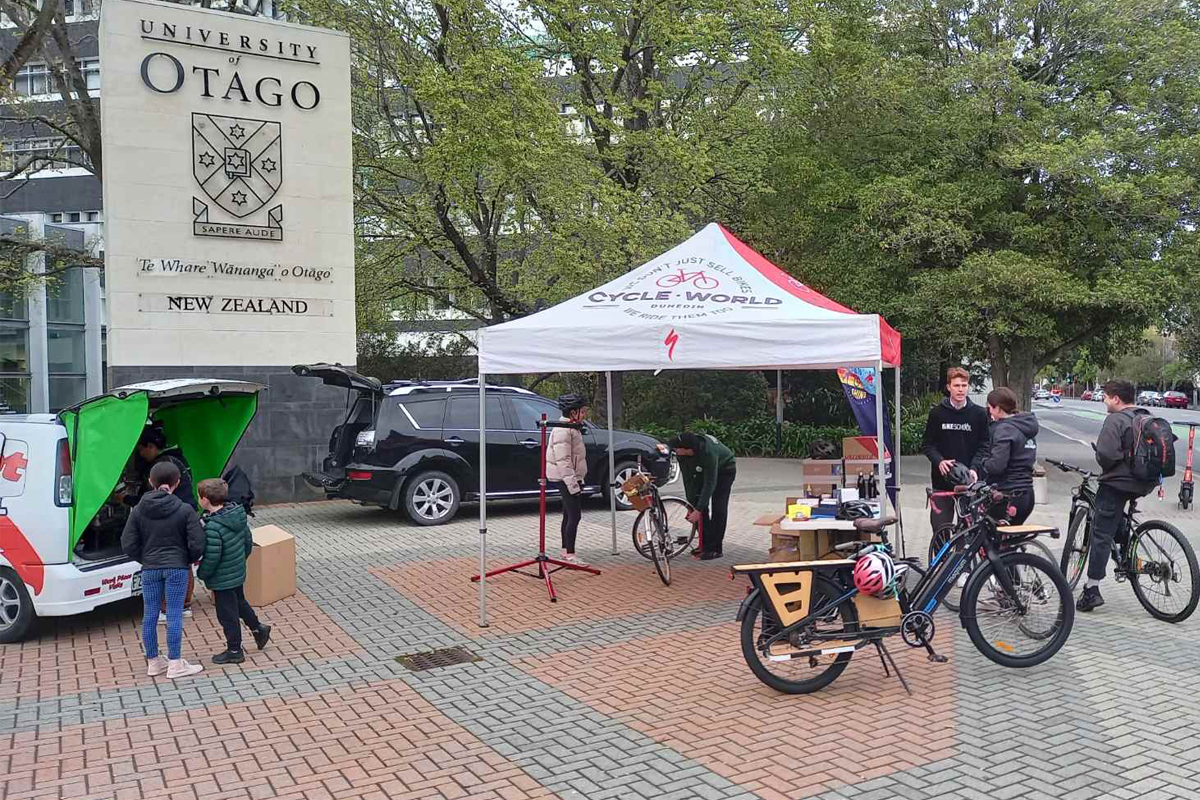Climate Action category
At Flinders University, we are committed to becoming a climate-positive institution, as we are committed to direct emissions reductions in line with the 1.5°C Paris Agreement target and aiming towards a net negative emissions profile by 2030. While electric vehicles are part of our future, we were determined to take it a step further with the concept of bi-directional smart-charging systems for electric vehicles (EVs) and demonstrate the commercial feasibility of Vehicle-to-Grid (V2G) to enable future energy storage from all vehicles on a global scale.
The initiative involves installing and maintaining 10 V2G and 15 smart chargers for the University’s growing EV fleet and public use. Through utilising bi-directional and smart charging, the University harnesses 100% renewable energy generated by ENGIE’s 119MW Willogoleche Wind Farm during the night and supplemented by Flinders University’s 2.2MW solar power systems at the University during the day. “Then, between 5 pm and 9 pm when the South Australian grid is under high demand, the stored 100% renewable energy in the EV batteries is discharged into the campus grid, enabling the university to reduce its demand when the wider South Australian grid is gas-fed or under stress.
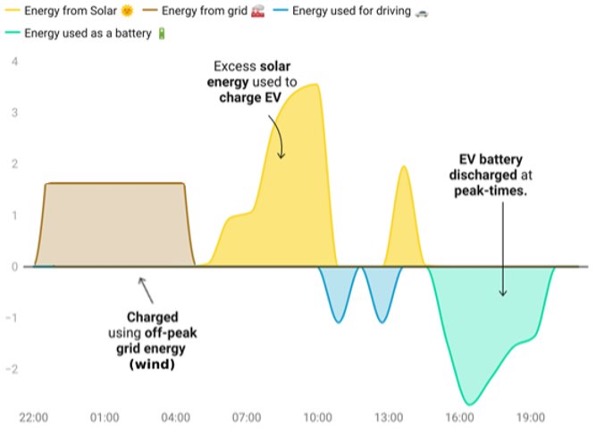
Figure 1: Diagram of 100% renewable energy daily usage and dispatch of V2G chargers.
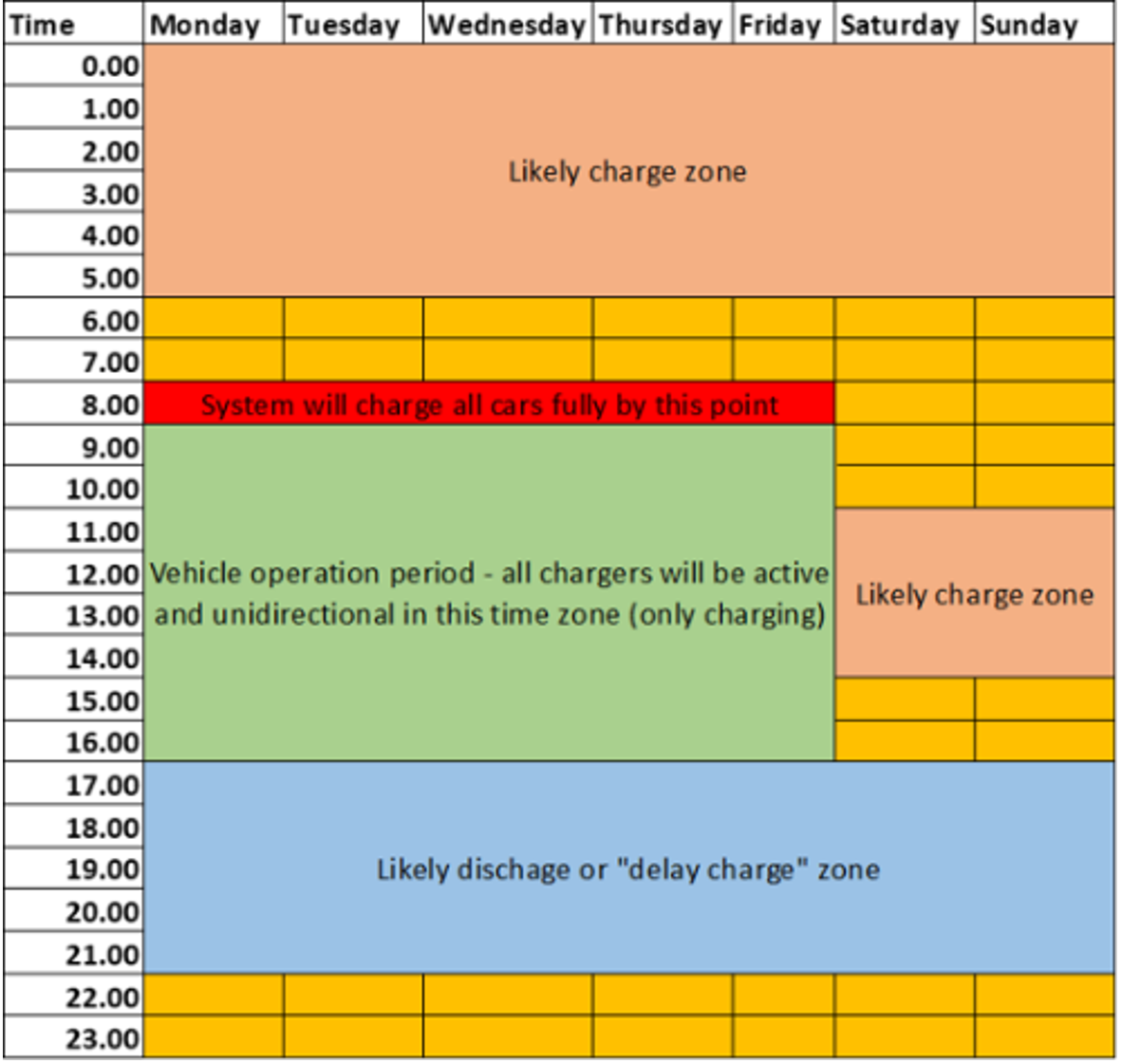
Figure 2: Breakdown of V2G process.
After a lot of hard work and regulatory approvals, our initiative is now a game-changer in the world of energy storage. Five fleet vehicles (10 on order) can now operate as a virtual power plant, delivering peak demand management and optimization of behind-the-meter generation. We are proud to say that we are helping to reduce the carbon footprint of the grid itself while harnessing the power of renewable energy.
But it’s not just about the technology. We have also incorporated dynamic digital signage to communicate how the technology works to users of our university fleet. This helps to educate staff and students about the importance of renewable energy and how they can contribute to a more sustainable future. Additionally, to increase the usability of this technology to more users, we have incorporated RFID-free charging as well as building management systems (BMS) integration and remote control.
We believe that our initiative is impactful and paving the way for future projects, such as the electrification of campus infrastructure and the extension of the concept to V2G EV for campus buses and pushing the global vehicle industry to embrace and provide both CHAdeMO and CCS V2G technology. We are at the forefront of the green energy revolution, and we are showing the world what’s possible when people come together with a shared vision for a better future.
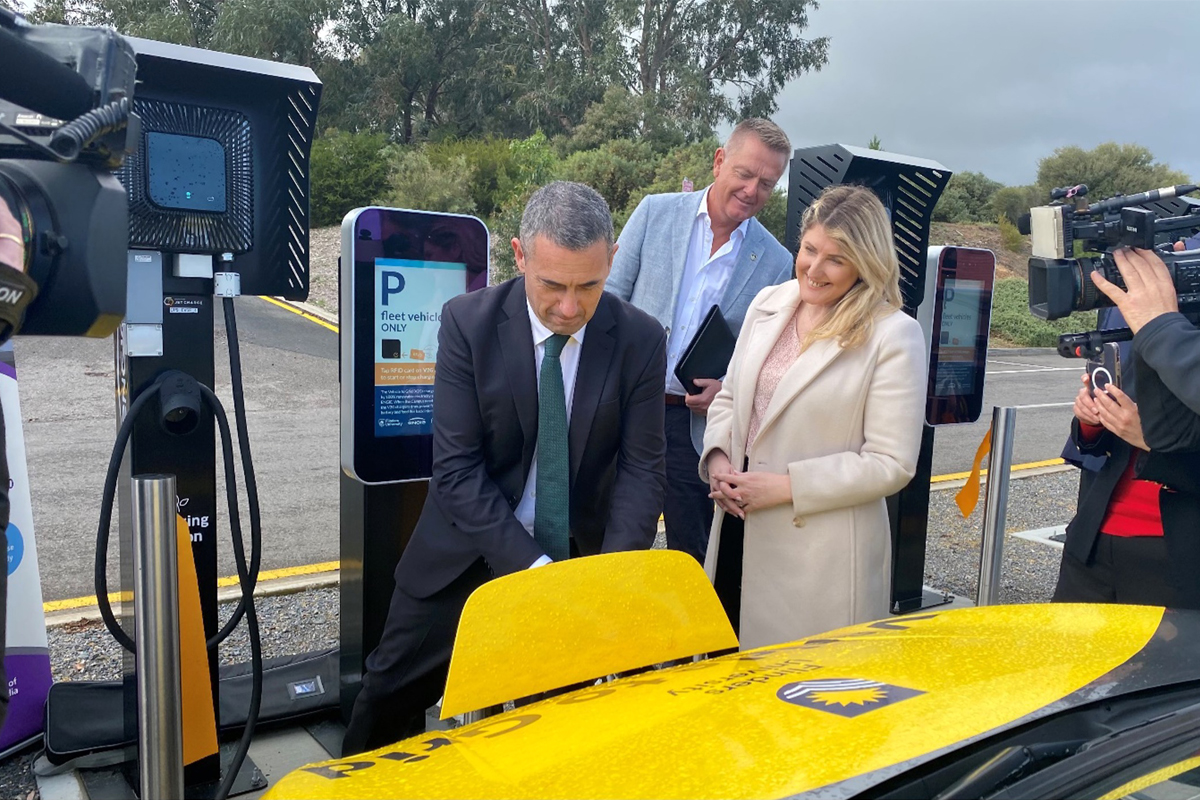
Environmental and social benefits
Environmentally, this initiative supports the scaling of energy storage technology to increase renewables and the minimisation of our dependence on fossil fuels. Importantly, while we recognise that our solar energy and ENGIE’s Wind energy has contributed to our significant reduction in scope 2 emissions within a span of 1 year, representing ~20% of our overall emissions, we expect that scaling up V2G technology will get us closer to reaching our climate-positive targets.
Beyond this, the initiative illustrates how a commercial fleet (pool vehicles) can optimally absorb renewable onsite generation during the day and wind energy at night, reducing university peak demand and delivering wider benefits to the stabilization of the South Australian grid through interaction with renewable energy assets. Furthermore, this initiative will help support and pave the way for future projects such as the full electrification of our fleet and campus infrastructure.

Figure 3: Flinders University Scope 2 Emissions from 2019 to 2022.
The implementation of this initiative has pushed us to move away from petrol fleets and prioritise EV fleets that support V2G charging. Currently, we are actively operating 5 Nissan Leaf cars on campus, as we await our fleet order. However, we are keen to expand on this form of EV fleet once there is sufficient market supply to ensure that we are reducing our overall scope 1 fuel emissions.
Regarding other benefits, our adoption of V2G technology means that we are increasing our resilience and adaptation against power outages and natural disasters. This is because it can serve as an emergency power source for critical infrastructure. By allowing us to tap into the energy stored in EV batteries, V2G can provide backup power.
Leadership and engagement
Similar to other Universities, we have progressively increased our deployment of solar panels across campus. As such, this has become a major contributor to us utilising 100% renewable electricity on campus. However, what enables our initiative to be distinctive is our push to embrace newer innovations such as V2G technologies and forming collaborations with various external stakeholders to support emissions reductions.
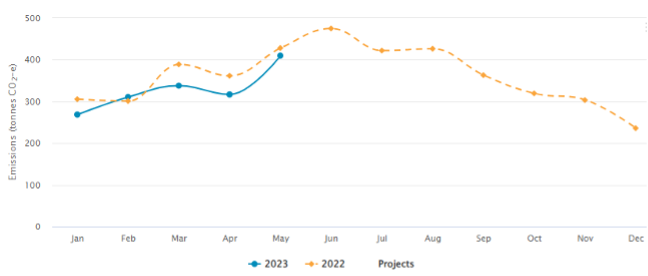
Figure 4: Flinders University overall campus emissions 2022 versus 2023.
Additionally, it is allowing us to demonstrate the potential and scalability of V2G technology not only locally through our network provider but all the up through the global supply chain.
Significance to the sector
Our initiative is distinctive and unique as we are one of the first Australian Universities to adopt V2G technology on campus to actively harness its technologically evolving capabilities. This allows us to demonstrate an innovative and scalable approach to achieving sustainability. Additionally, it proves that we are not afraid to push boundaries by incorporating new technological components such as dynamic digital signages which is the first-first-of-its kind as well as ensuring this emerging technology achieves regulatory approvals via the network provider.
Wider societal impact
The wider societal impact and value of this initiative are that it contributes to the normalisation of V2G for fleet use; assisted in the development of new fleet standard operating procedure (SOP) to increase scalability; helps developed nuanced communication for uses; and is the first step in scaling transport as a campus energy storage.
Moreover, reflecting on the potential of surplus energy that electric vehicles may hold, a recent Australian Financial Review editorial presented compelling statistics. The typical Australian car owner, equipped with an electric vehicle of an average 60kWh battery size, only utilizes approximately 10% of this capacity daily, leaving a substantial 90% as surplus energy. Given that Australia boasts about 15 million registered passenger vehicles, this translates to a combined surplus energy potential of 720 gigawatt-hours (GW-hours), mirroring the country’s average daily electricity generation. The implications are profound: a fully electric vehicle fleet could serve as a colossal, decentralized energy storage system, maintaining nearly a full day’s worth of Australia’s electricity supply beyond our transportation needs. Such a resource could be instrumental in bolstering the grid during peak demand periods, notably the evening hours, and could facilitate a significant transition away from fossil fuel-based electricity, thereby aiding in mitigating climate change. The role of electric vehicles, therefore, extends beyond merely providing sustainable transport – they could revolutionize our energy systems and expedite our transition towards a greener, carbon-neutral society. Therefore, our initiative is showcasing the tremendous prospects of harnessing this technology.
Learner/Graduate employer impact
While this project is coordinated from the operational functions of the University, this initiative ensures that the data from this project will be available to students and researchers who want to participate with this project to gain both valuable hard skills and soft skills such as engineering, business, law, analytics, leadership and project management. All of which will be vital to their employability once they graduate and enter the workforce.

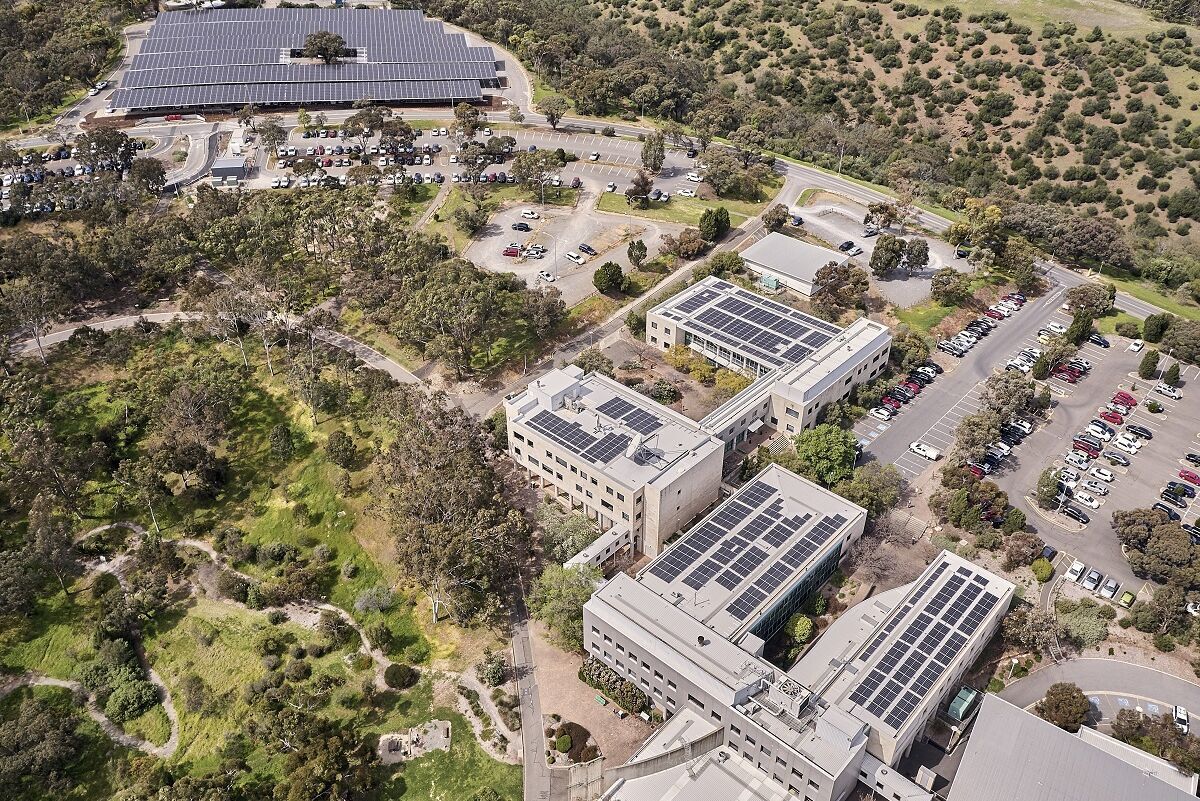
Top 3 learnings
Related finalists
Climate Action/Winners
Climate Action/Winners
Climate Action
Climate Action
Other finalists
Climate Action
Climate Action
Sustainability Champion – Staff/Winners
Sustainability Champion – Staff/Winners
Student Engagement
Student Engagement
Creating Impact
Creating Impact
Sustainability Champion – Staff/Winners
Sustainability Champion – Staff/Winners
Sustainability Champion – Student
Sustainability Champion – Student
Top 3 learnings
Climate Action category
At Flinders University, we are committed to becoming a climate-positive institution, as we are committed to direct emissions reductions in line with the 1.5°C Paris Agreement target and aiming towards a net negative emissions profile by 2030. While electric vehicles are part of our future, we were determined to take it a step further with the concept of bi-directional smart-charging systems for electric vehicles (EVs) and demonstrate the commercial feasibility of Vehicle-to-Grid (V2G) to enable future energy storage from all vehicles on a global scale.
The initiative involves installing and maintaining 10 V2G and 15 smart chargers for the University’s growing EV fleet and public use. Through utilising bi-directional and smart charging, the University harnesses 100% renewable energy generated by ENGIE’s 119MW Willogoleche Wind Farm during the night and supplemented by Flinders University’s 2.2MW solar power systems at the University during the day. “Then, between 5 pm and 9 pm when the South Australian grid is under high demand, the stored 100% renewable energy in the EV batteries is discharged into the campus grid, enabling the university to reduce its demand when the wider South Australian grid is gas-fed or under stress.

Figure 1: Diagram of 100% renewable energy daily usage and dispatch of V2G chargers.

Figure 2: Breakdown of V2G process.
After a lot of hard work and regulatory approvals, our initiative is now a game-changer in the world of energy storage. Five fleet vehicles (10 on order) can now operate as a virtual power plant, delivering peak demand management and optimization of behind-the-meter generation. We are proud to say that we are helping to reduce the carbon footprint of the grid itself while harnessing the power of renewable energy.
But it’s not just about the technology. We have also incorporated dynamic digital signage to communicate how the technology works to users of our university fleet. This helps to educate staff and students about the importance of renewable energy and how they can contribute to a more sustainable future. Additionally, to increase the usability of this technology to more users, we have incorporated RFID-free charging as well as building management systems (BMS) integration and remote control.
We believe that our initiative is impactful and paving the way for future projects, such as the electrification of campus infrastructure and the extension of the concept to V2G EV for campus buses and pushing the global vehicle industry to embrace and provide both CHAdeMO and CCS V2G technology. We are at the forefront of the green energy revolution, and we are showing the world what’s possible when people come together with a shared vision for a better future.

Environmental and social benefits
Environmentally, this initiative supports the scaling of energy storage technology to increase renewables and the minimisation of our dependence on fossil fuels. Importantly, while we recognise that our solar energy and ENGIE’s Wind energy has contributed to our significant reduction in scope 2 emissions within a span of 1 year, representing ~20% of our overall emissions, we expect that scaling up V2G technology will get us closer to reaching our climate-positive targets.
Beyond this, the initiative illustrates how a commercial fleet (pool vehicles) can optimally absorb renewable onsite generation during the day and wind energy at night, reducing university peak demand and delivering wider benefits to the stabilization of the South Australian grid through interaction with renewable energy assets. Furthermore, this initiative will help support and pave the way for future projects such as the full electrification of our fleet and campus infrastructure.

Figure 3: Flinders University Scope 2 Emissions from 2019 to 2022.
The implementation of this initiative has pushed us to move away from petrol fleets and prioritise EV fleets that support V2G charging. Currently, we are actively operating 5 Nissan Leaf cars on campus, as we await our fleet order. However, we are keen to expand on this form of EV fleet once there is sufficient market supply to ensure that we are reducing our overall scope 1 fuel emissions.
Regarding other benefits, our adoption of V2G technology means that we are increasing our resilience and adaptation against power outages and natural disasters. This is because it can serve as an emergency power source for critical infrastructure. By allowing us to tap into the energy stored in EV batteries, V2G can provide backup power.
Leadership and engagement
Similar to other Universities, we have progressively increased our deployment of solar panels across campus. As such, this has become a major contributor to us utilising 100% renewable electricity on campus. However, what enables our initiative to be distinctive is our push to embrace newer innovations such as V2G technologies and forming collaborations with various external stakeholders to support emissions reductions.

Figure 4: Flinders University overall campus emissions 2022 versus 2023.
Additionally, it is allowing us to demonstrate the potential and scalability of V2G technology not only locally through our network provider but all the up through the global supply chain.
Significance to the sector
Our initiative is distinctive and unique as we are one of the first Australian Universities to adopt V2G technology on campus to actively harness its technologically evolving capabilities. This allows us to demonstrate an innovative and scalable approach to achieving sustainability. Additionally, it proves that we are not afraid to push boundaries by incorporating new technological components such as dynamic digital signages which is the first-first-of-its kind as well as ensuring this emerging technology achieves regulatory approvals via the network provider.
Wider societal impact
The wider societal impact and value of this initiative are that it contributes to the normalisation of V2G for fleet use; assisted in the development of new fleet standard operating procedure (SOP) to increase scalability; helps developed nuanced communication for uses; and is the first step in scaling transport as a campus energy storage.
Moreover, reflecting on the potential of surplus energy that electric vehicles may hold, a recent Australian Financial Review editorial presented compelling statistics. The typical Australian car owner, equipped with an electric vehicle of an average 60kWh battery size, only utilizes approximately 10% of this capacity daily, leaving a substantial 90% as surplus energy. Given that Australia boasts about 15 million registered passenger vehicles, this translates to a combined surplus energy potential of 720 gigawatt-hours (GW-hours), mirroring the country’s average daily electricity generation. The implications are profound: a fully electric vehicle fleet could serve as a colossal, decentralized energy storage system, maintaining nearly a full day’s worth of Australia’s electricity supply beyond our transportation needs. Such a resource could be instrumental in bolstering the grid during peak demand periods, notably the evening hours, and could facilitate a significant transition away from fossil fuel-based electricity, thereby aiding in mitigating climate change. The role of electric vehicles, therefore, extends beyond merely providing sustainable transport – they could revolutionize our energy systems and expedite our transition towards a greener, carbon-neutral society. Therefore, our initiative is showcasing the tremendous prospects of harnessing this technology.
Learner/Graduate employer impact
While this project is coordinated from the operational functions of the University, this initiative ensures that the data from this project will be available to students and researchers who want to participate with this project to gain both valuable hard skills and soft skills such as engineering, business, law, analytics, leadership and project management. All of which will be vital to their employability once they graduate and enter the workforce.


Related finalists
Climate Action/Winners
Climate Action/Winners
Climate Action
Climate Action
Other finalists
Climate Action


Driving Towards Tomorrow’s Campus with Vehicle-to-Grid EV Technology
As part of Flinders University’s drive to innovate and become a leader in climate action, the University launched its Vehicle-to-Grid (V2G) initiative. This involved installing and maintaining 20x V2G and smart chargers for its growing electric vehicle fleet. Leveraging 100% renewable energy generated by ENGIE’s Willogoleche Wind Farm and Flinders University’s solar power systems, this enables the storage of renewable energy in EV batteries to be discharged on campus during peak demand periods. Hence, allows for these EV fleets to operate as a Virtual Power Plant (VPP) to deliver peak demand management and optimization of behind-the-meter generation.
Overall, this initiative demonstrates the reliability and scalability of bi-directional and uni-directional smart-charging systems for EVs in reducing GHG emissions while facilitating teaching, research, and innovation opportunities. Moreover, it exemplifies a sustainable and innovative solution to scale energy storage technology and increase renewables.
Sustainability Champion – Staff/Winners
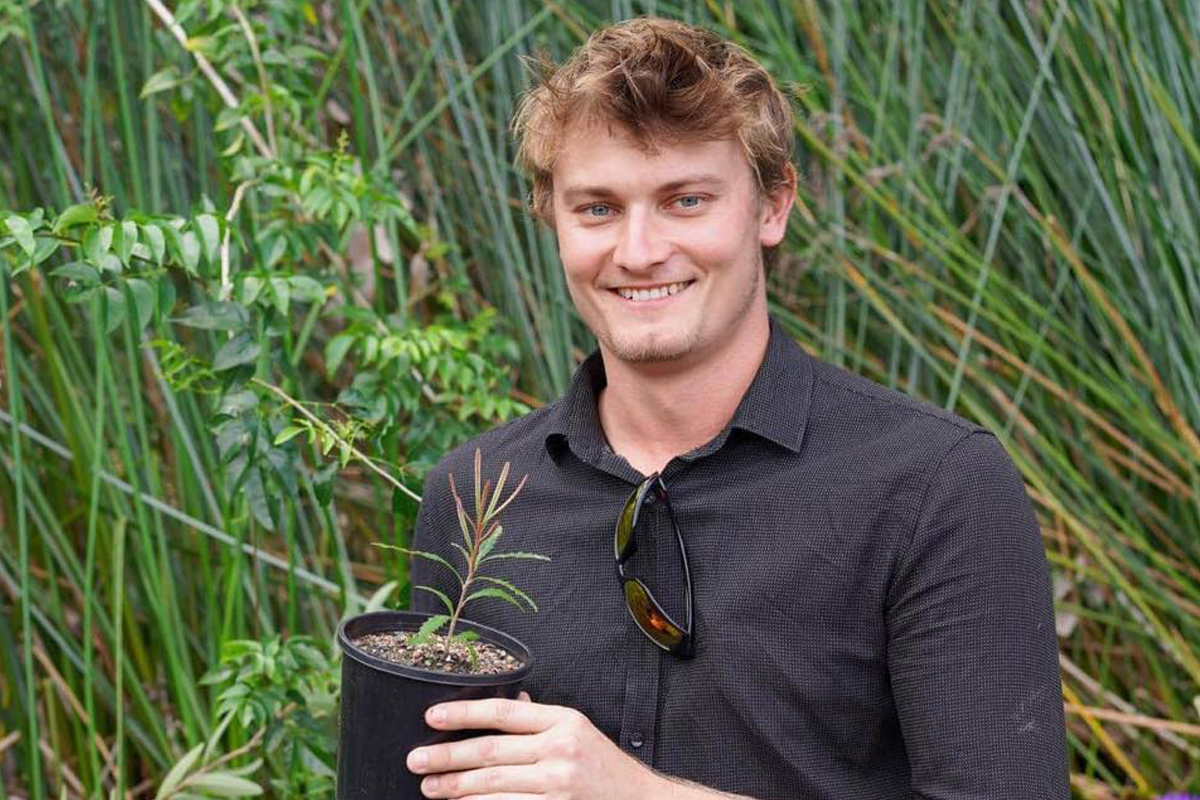
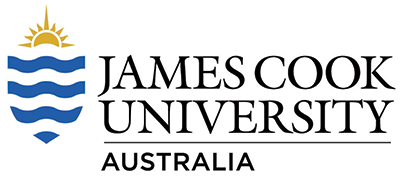
Brandan Espe
Environmental Officer / Acting Grounds Supervisor
Brandan has brought over 50 federally listed Endangered species of plant into the James Cook University living collection, many of which have never been cultivated and are found in no other collection in the world.
Of these, over half have been sustainably wild collected, inclusive of field and clone data, so they can be used for ongoing conservation, research and teaching, the remaining being sourced from private and partner organisations through favours of service or trades.
He personally funded the project from 2019-2022, until funding was awarded for the program due to its success, with the program now being engrained into the Universities landscapes for ongoing management should he leave JCU, creating a threatened species legacy collection.
The program has now expanded beyond this, with an additional 48 species now funded for further addition, some of which are only known from less than 5 sightings in history.
Student Engagement
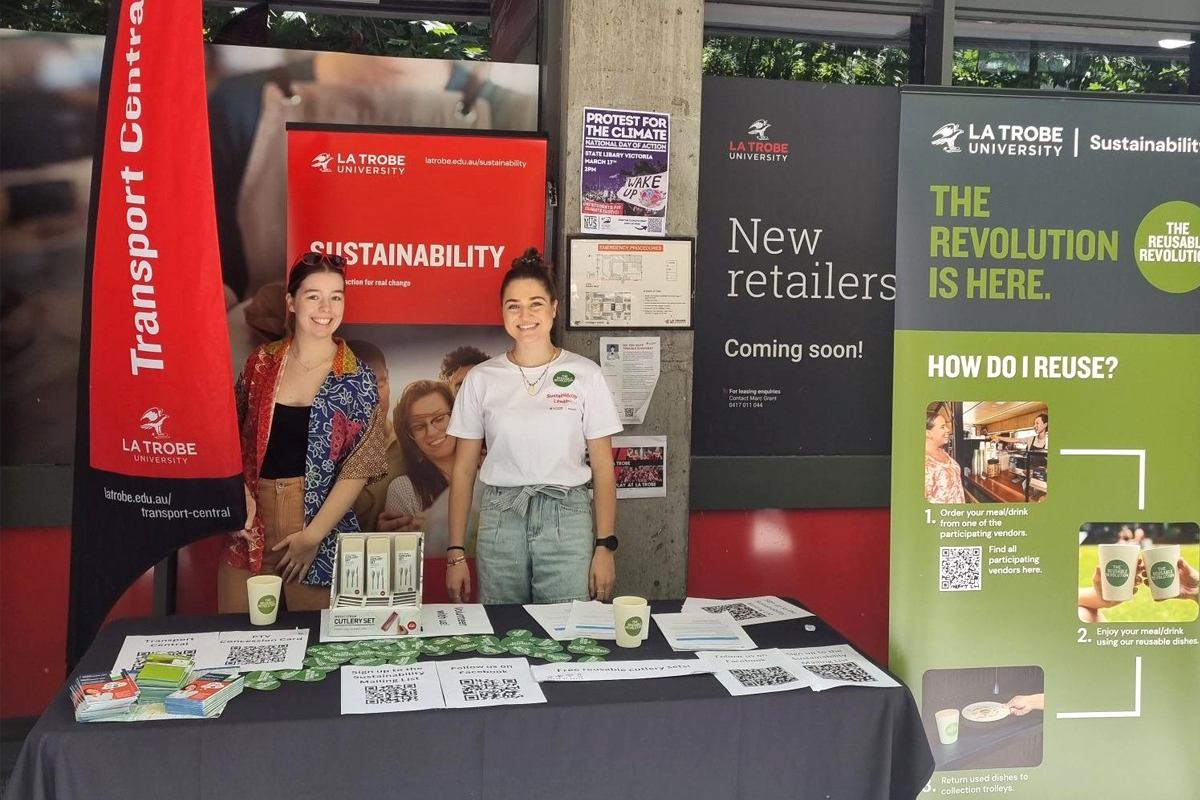

Sustainability Leaders creating real impact!
La Trobe created a unique Sustainability Leaders volunteering program to increase engagement with students on campus and empower them to act against waste and promote sustainability. It included the following initiatives:
- Promoting the reusable crockery implementation,
- Increasing knowledge action of other students on campus to diversion comingled recycling and organic waste from landfill.
- Focus on waste audits and data,
- Improved signage through new waste posters for students living on campus.
- Collaboration with Cirka (our cleaning and waste partner) to create a waste wall and;
- Learning all things sustainability (net zero, biodiversity, waste, reusables, engagement)
These initiatives yielded significant results and with a reduction in waste contamination by almost 40% at the residential buildings and engagement with over 80 groups of people for the Reusable Revolution.
Creating Impact
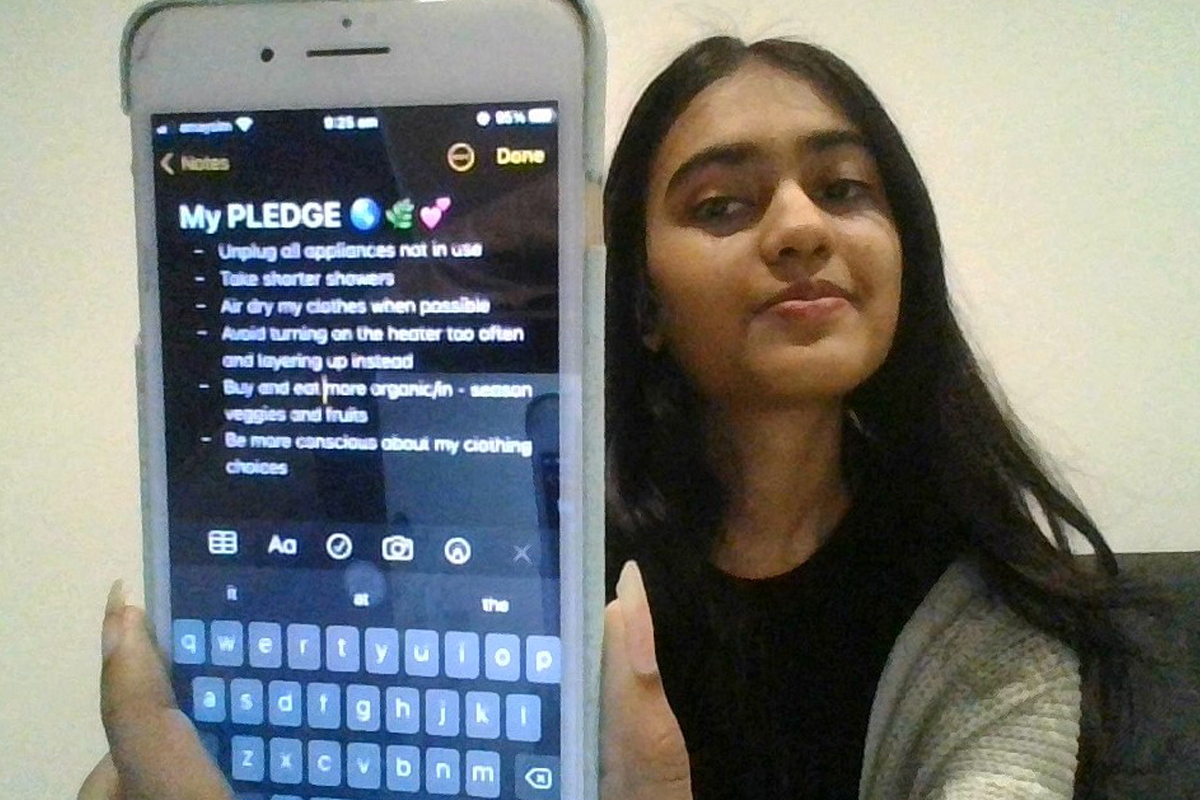

Where knowledge meets habits: Empowering students for a sustainable tomorrow
Our online Sustainability Challenges offer participants an engaging, self-paced learning experience centered around a specific United Nations Sustainable Development Goal (UNSDG). Requiring minimal resourcing and at zero-cost to participants, we’ve created replicable, compact, scalable, and impactful learning opportunities that result in real impact.
The Challenges follow a structured process that moves participants from knowledge gain to simple action to celebration, to establish small but mighty habits relating to waste and carbon emissions. This approach recognises that knowledge alone is often insufficient to drive behaviour change, and that ease of action and celebration are crucial components in creating sustainable habits.
Sustainability Champion – Staff/Winners
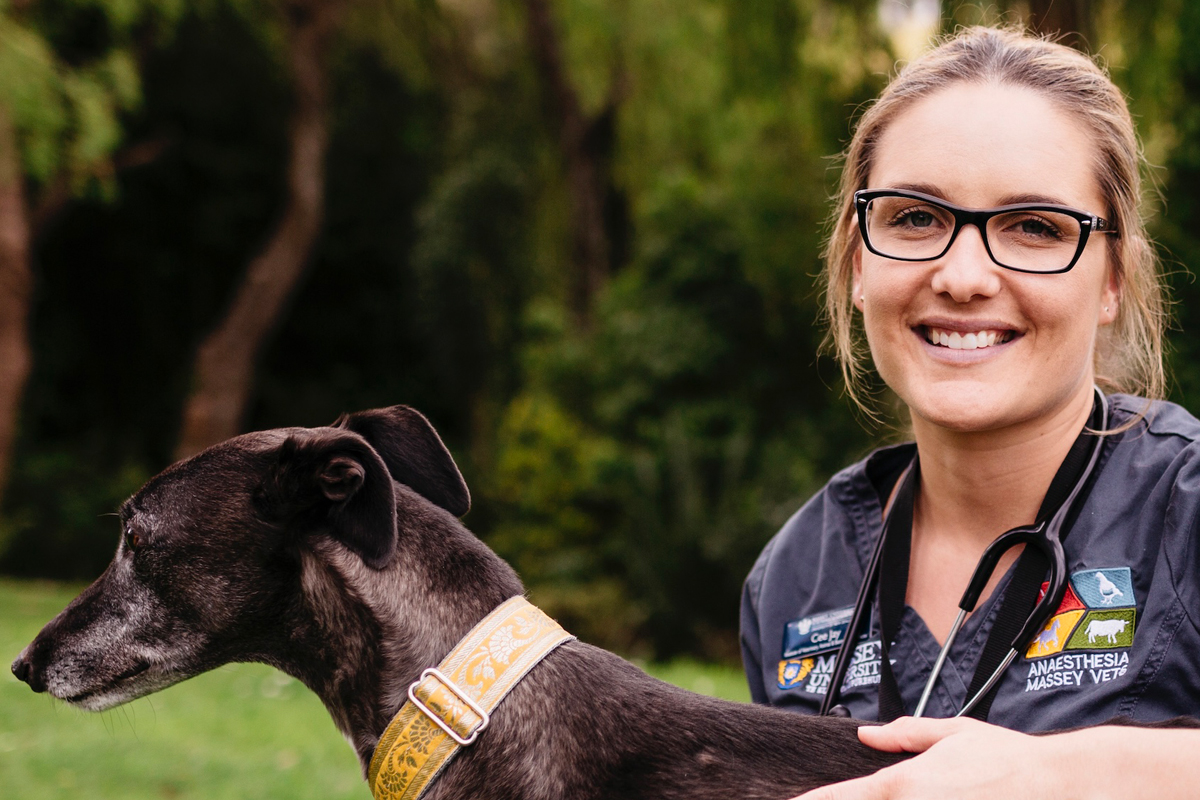

Catherine (CeeJay) Donovan
Veterinary nurse – Anaesthesia
From establishing the Massey Vet School Green Team to leading impactful initiatives, my commitment to environmental sustainability has been making waves. With the help of my team, I have accomplished numerous small, yet meaningful actions, including integrating a sustainability lecture for final year vet students and implementing battery recycling alongside rechargeable battery use. Our larger projects encompass the introduction of green waste and soft plastics recycling bins, an energy audit resulting in power-saving measures, and playing a part in a successful rubbish audit. I spearheaded the ‘6 in 6’ campaign, empowering individuals with six simple steps for workplace sustainability. Through the SustainaVet social media pages I help to educate and inspire peers nationwide. As the Massey School of Veterinary Science sustainability champion, I had the privilege of speaking at the annual veterinary conference on sustainability in clinical practice. Currently I’m conducting pioneering research on responsible cat waste disposal. Together, we’re forging a greener future, one initiative at a time.
Sustainability Champion – Student


Louis Walmsley
SDG Coordinator Monash Association of Sustainability, Office Bearer Monash Student Association’s Environmental and Social Justice Department, Masters of Environment and Sustainability Student
Louis is an exceptional student sustainability leader at Monash University. His passion and dedication to sustainability have made a significant impact on the community. Louis’s values revolve around sustainability, which is evident upon meeting him. He actively participates in various sustainability groups, demonstrating his commitment to creating a more environmentally conscious society.
One of Louis’s notable involvements is with Precious Plastic Monash, where he organizes remarkable events and fosters collaboration among like-minded individuals, student groups, and staff. His contributions to the Monash Association of Sustainability have allowed him to conduct valuable research on plastic usage and climate action, resulting in positive changes within the university.
Through his work with the Monash Student Association, Louis has engaged hundreds of students in fun and interactive sustainability initiatives. He took the initiative to organize a sustainability food fair, which was one of the largest sustainability-related events held at Monash post-COVID. This accomplishment is a true testament to Louis’s hard work and creativity.
Louis is an outstanding student leader whose efforts in sustainability have had a lasting impact on Monash University and its community. His inspiring nature resonates with everyone who knows him.

